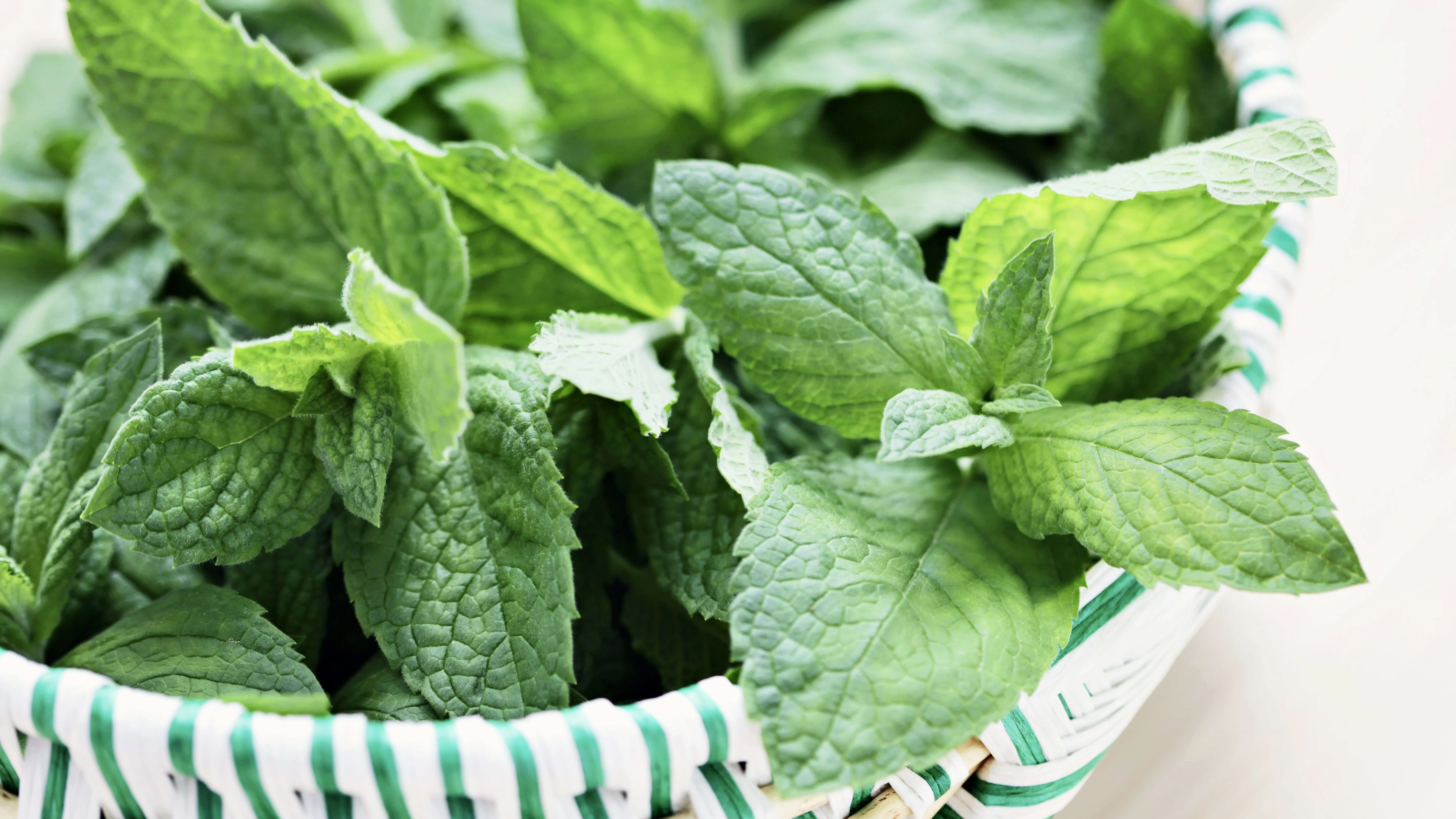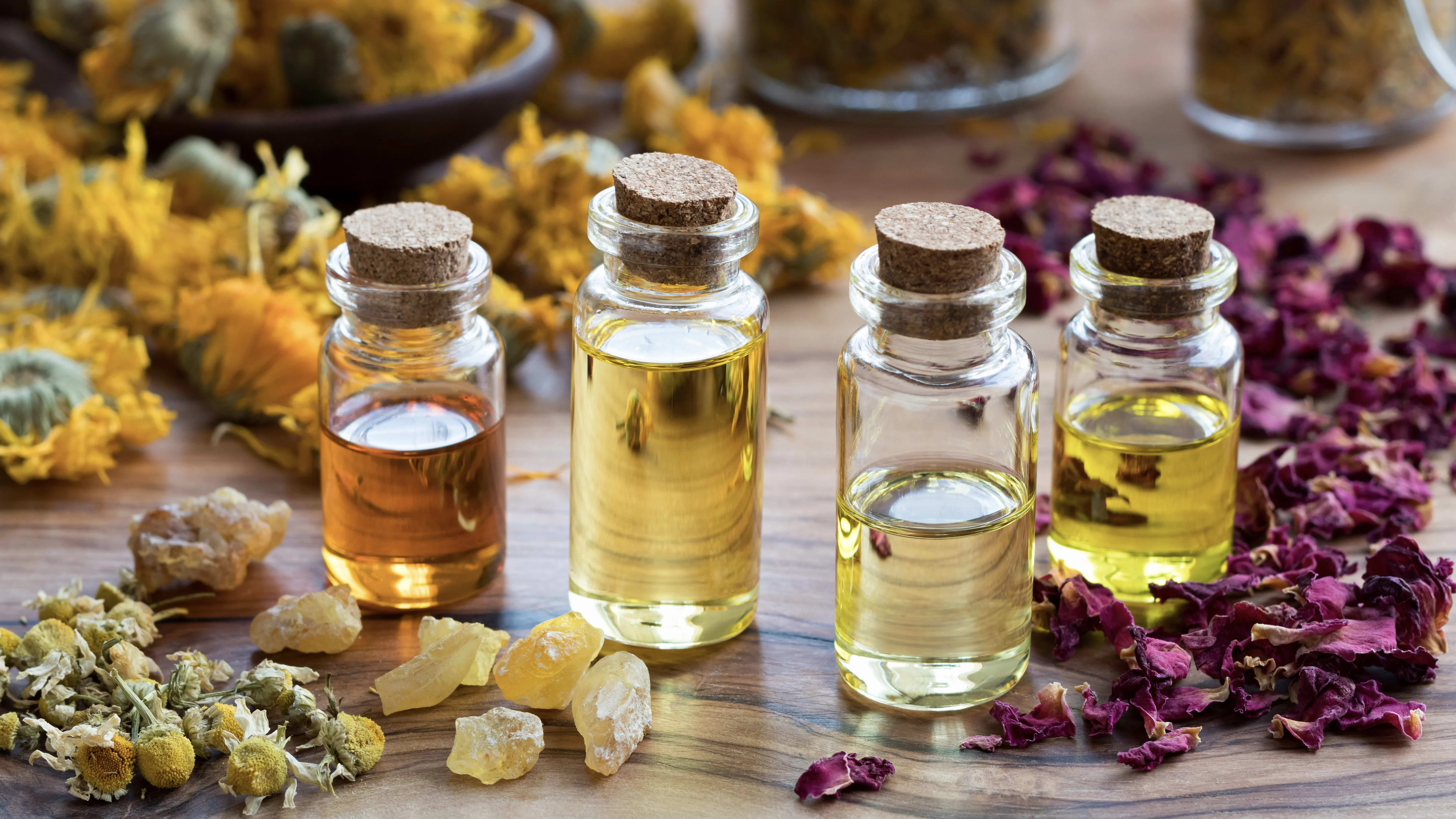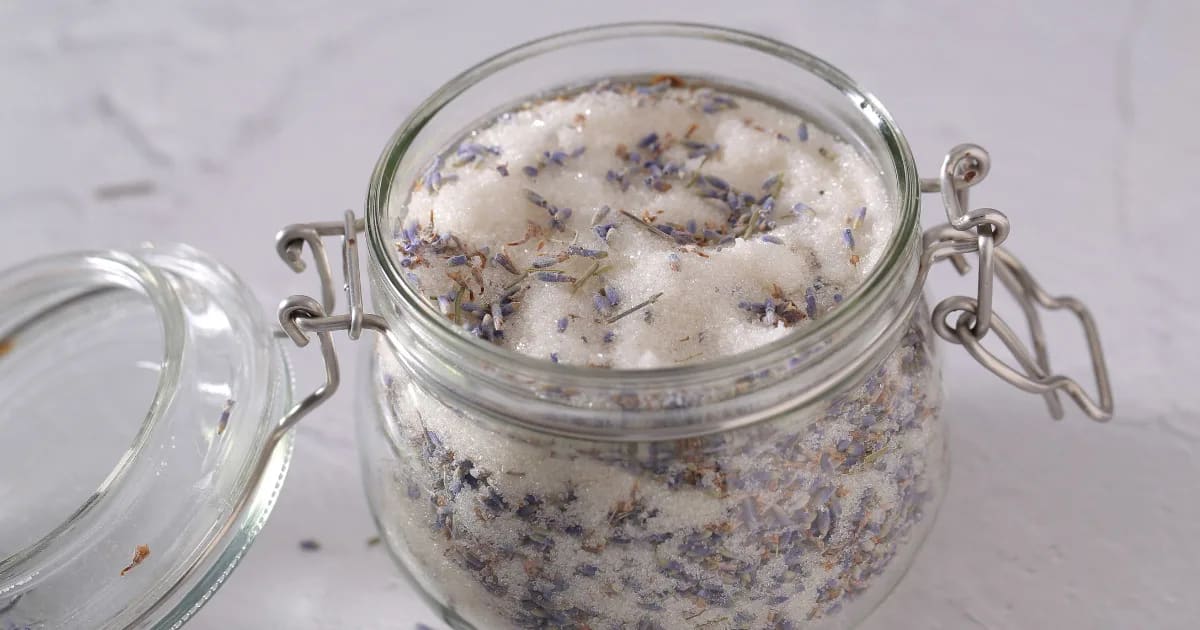Peppermint Essential Oil Benefits & Uses: Full Profile

Peppermint Oil: Clear the Mind, Awaken the Spirit
Peppermint stretches toward the sun, bright green, assertive, full of clean energy. Rubbing a peppermint leaf between your fingers releases its sharp, lively aroma, a scent that lifts the mind like a breeze through an open window.
I reach for peppermint essential oil when things feel heavy. It clears and calms. It stirs the senses without pushing too hard.
This quality is embedded in the plant's very nature. Peppermint grows fast, spreading through underground runners, determined and unstoppable in the right conditions. It thrives in cool, moist soil and makes itself known in a garden with its unmistakable minty scent and appetite for expansion. In this way, peppermint oil mirrors what it offers us: the ability to move, release, and reset.
This post is an exploration of that, of what makes peppermint so powerful, how it works in the body, and how to use it safely and effectively.
In this post, you’ll learn:
Where peppermint comes from
How peppermint essential oil is made and what gives it its signature scent
What modern science tells us about menthol and its effects
Peppermint oil’s key benefits in aromatherapy—from digestion and pain relief, to focus and mood
Emotional and energetic benefits of peppermint oil
Important safety considerations, including how to dilute peppermint essential oil in carrier oils, and when to avoid it
From its place in ancient herbal traditions to the cooling precision of its essential oil, peppermint is a botanical ally for both body and spirit, and one of the best sellers of the aromatherapy world.
Where Does Peppermint Oil Come From?
Native to Europe and the Middle East, the peppermint plant is now cultivated around the world. It’s a hybrid of watermint and spearmint, and is a member of the Lamiaceae botanical family (the same family as lavender, Lavandula angustifolia, and oregano, Origanum vulgare!).
Its Latin name is Mentha × piperita. The “×” indicates that it's a hybrid plant. (It's a natural hybrid between watermint, Mentha aquatica, and spearmint, Mentha spicata.) However, you'll often see it written as simply Mentha piperita (without the “×”). Rest assured that Mentha piperita is still referring to peppermint oil!
Peppermint thrives in moist environments and grows rapidly, sometimes aggressively. This is one of those herbs that may try to overtake your garden if you let it! The plant produces clusters of small purple flowers in summer and is easily grown in containers, making it a favorite for herb lovers and kitchen gardeners.
Peppermint oil is steam distilled from the fresh aerial plant parts. Its aroma is unmistakable: cool, penetrating, and minty fresh with crisp green notes and a sweet, sharp edge. This bracing scent awakens the senses and clears the head, making peppermint oil a beloved go-to for moments of mental fog or fatigue.
Historically, peppermint has been used for both digestive and respiratory relief. The ancient Egyptians, Greeks, and Romans all made use of mint for its refreshing and restorative qualities. However, they were likely working with different varieties of mint. The plant we currently know as “peppermint” was only recognized as a distinct species in the 17th century.
Today, we also use peppermint extract in the kitchen, bringing its bright flavor into candies and desserts. The leaves can be used for peppermint tea, muddled into summer drinks, or sprinkled fresh over fruit.
Peppermint Oil Science
Peppermint oil contains a high percentage of menthol, which is responsible for its fresh, minty aroma. Research on menthol shows us that it activates nerve receptors that respond to cold, TRPM8 receptors (Pergolizzi et al. 2018). While it doesn’t actually cool the temperature of your skin, it sends signals to your brain that make you think you’re feeling cold. This results in a comforting numbing sensation that’s excellent for pain relief!
Menthol also causes vasodilation, where tiny blood vessels widen in the skin (Craighead & Alexander, 2016). So paradoxically, while the essential oil is making you feel cooler, it’s actually increasing blood flow and “warming” the area!
Studies show menthol to be:
Analgesic (Guimarães, Quintans & Quintans-Júnior, 2013)
Anti-inflammatory (Guimarães, Quintans & Quintans-Júnior, 2013)
Antifungal (Zore et al. 2022)
Vasodilating (Craighead & Alexander, 2016)
In addition to menthol’s properties, peppermint has been found to be:
Antibacterial, including against MRSA (Zhao et al. 2023; Singh, Sushi & Belkheir, 2015)
Antioxidant (Singh, Sushi & Belkheir, 2015)
Antispasmodic (Heinrich et al. 2004)
Antitussive (calming coughs)
Antiviral, including against HSV1 and HSV2 (Edris 2007; Schuhmacher, Reichling, & Schnitzler, 2003)
Cognition support (Barker et al. 2003)
Decongestant (Battaglia, 2018)
Digestive (Chumpitazi, Kearns & Shulman, 2018)
Stimulant (Battaglia, 2018; Moss, Hewitt & Moss, 2008)
When it comes to the essential oil's antimicrobial properties, it seems to work best by disrupting “free viruses,” before they infect a host cell. It damages the viral envelope, and helps prevent the spread of the virus in that way. It has a similar effect on certain bacteria, disrupting their membranes.
Benefits & Uses of Peppermint Oil
All of this makes peppermint one of the most popular, versatile essential oils! It's ideal in essential oil diffusers, body scrub, massage oil, lip balms, spray bottle blends, and other essential oil blends.
It’s useful when we’re experiencing pain and inflammation. I love this essential oil for headache, and sore, tight, muscles. It’s also wonderful for natural cleaning and reducing the risk of infection (or slowing the spread). It can be used in blends for colds and flu, and it's very cooling for a fever. (Try combining it with tea tree essential oil, Melaleuca alternifolia, to reduce infection, or with eucalyptus essential oil, Eucalyptus globulus, to clear your sinuses!)
Peppermint’s ability to calm spasms is impressive. This makes the oil a strong ally when we’re coughing or cramping. Try it when you have a “crick in your neck,” and can’t turn your head. It helps ease the pain and release the tension. (This is another reason I love peppermint for headaches, since many are related to tension in the shoulders, neck, and scalp.) Try adding a few drops of peppermint to a foot cream. It cools, soothes, and refreshes tired, achy feet!
Peppermint is a classic choice for any sort of digestive discomfort, from nausea, to a spot of indigestion, to chronic issues like IBS.
Along with all of these physical benefits, peppermint helps us mentally and emotionally. It’s been shown to relieve burnout and support mental focus, allowing us to set down heavy mental loads and find a fresh perspective that leaves us feeling inspired and confident. Peppermint has even been shown to enhance memory and learning (Lv et al. 2022), and to improve our focus and energy without raising stress.
Can you use peppermint oil for hair care? Peppermint's stimulating effects can get blood and nutrients flowing through the scalp, supporting hair growth (and potentially reducing hair loss). However, we sometimes find it a little too stimulating for the sensitive skin of the scalp, so we prefer to use it in low concentrations for hair care. It blends well with rosemary essential oil (Salvia rosmarinus) for this!
This is a plant and essential oil that brings clarity, cools irritation (both physical and emotional), and helps us reset. It's often used for head tension, digestive upset, and feelings of burnout or overload, moments when we need both calm and focus, soothing and stamina.
Author Gabriel Mojay writes:
Traditionally classified as a Visionary Herb, mint was thought not only to uplift the Spirit, but to bring dreams of prophecy. Clearly, peppermint oil enhances our receptive capacities on both mental and spiritual levels, and like clary sage and laurel, benefits those in need of inspiration and insight.
Peppermint Essential Oil Safety
Pure peppermint essential oil is strong due to its high menthol content. So The Aromahead Approach® to using peppermint is to be extra cautious.
Based in part on the advice of Robert Tisserand and Rodney Young (authors of Essential Oil Safety, Second Edition), here are our considerations:
Peppermint may irritate skin or mucous membranes.
To avoid skin irritation during topical peppermint oil application, dilute the essential oil in a skin-nourishing carrier oil (such as coconut oil, Cocos nucifera) before applying it to your skin. We use a 1% dilution, which is about 5-6 drops per 1 oz (30 ml) of carrier.
While peppermint is cooling, using too much can actually overstimulate your sensory receptors and create an uncomfortable hot sensation.
Avoid topical application on the face or around the eyes. Wash your hands well after use so you don’t accidentally touch your eyes.
We do not recommend using peppermint topically with babies or children under five years old. (We actually prefer to avoid essentials altogether for children younger than 5.)
Be sure to use organic peppermint essential oil to get its full therapeutic benefits. Check here for tips on ensuring you're buying pure essential oil.
Look for the Latin name Mentha × piperita or Mentha piperita to ensure you’re using the intended species of mint essential oil.
Don’t use this oil in the bathtub, as combining peppermint with hot water can irritate the skin.
Contraindicated in case of cardiac fibrillation and for G6PD deficiency.
My Takeaway
Peppermint oil earns its place in our aromatherapy collections with just a few drops. It's one of those essential oils that works on both the physical and emotional levels, refreshing the body while reviving the mind.
But for all its strength, peppermint also reminds me to use its power wisely. It doesn’t take much to feel its effects, and with just a few drops (properly diluted) we can tap into its wisdom in a way that’s safe and effective. To me, peppermint is a go-to oil, a botanical ally that clears space, renews energy, and brings us back to a state of calm, capable presence.
REFERENCES
Barker, S., Grayhem, P., Koon, J., Perkins, J., Whalen, A., & Raudenbush, B. (2003). Improved performance on clerical tasks associated with administration of peppermint odor. Perceptual and Motor Skills, 97(3), 1007-1010
Chumpitazi, B. P., Kearns, G. L., & Shulman, R. J. (2018). Review article: the physiological effects and safety of peppermint oil and its efficacy in irritable bowel syndrome and other functional disorders. Alimentary pharmacology & therapeutics, 47(6), 738–752. https://doi.org/10.1111/apt.14519
Craighead, D. H., & Alexander, L. M. (2016). Topical menthol increases cutaneous blood flow. Microvascular research, 107, 39–45. https://doi.org/10.1016/j.mvr.2016.04.010
Edris, A.E. (2007) Pharmaceutical and therapeutic potentials of essential oils and their individual volatile constituents: a review. Phytotherapy Research 21, 308-323.
Guimarães, A.G., Quintans, J.S.S. and Quintans-Júnior, L.J. (2013) Monoterpenes with analgesic activity – a systematic review. Phytotherapy Research 27, 1-15.
Heinrich, M., Barnes, J., Gibbons, S. and Williamson, E.M. (2004) Fundamentals of Pharmacognosy and Phytotherapy. Edinburgh: Churchill Livingstone.
Lv, X., Feng, Y., Ma, R., Tang, Y., Li, Y., Cui, D., & Wu, Y. (2022). Effects of Peppermint Essential Oil on Learning and Memory Ability in APP/PS1 Transgenic Mice. Molecules (Basel, Switzerland), 27(7), 2051. https://doi.org/10.3390/molecules27072051
Mojay, G. (1997) Aromatherapy for Healing the Spirit. Rochester, Vermont: Healing Arts Press
Moss, M., Hewitt, S. and Moss, L. (2008) Modulation of cognitive performance and mood by aromas of peppermint and ylang ylang. International Journal of Neuroscience 118, 59-77
Pergolizzi Jr, J. V., Taylor Jr, R., LeQuang, J. A., Raffa, R. B., & NEMA Research Group. (2018). The role and mechanism of action of menthol in topical analgesic products. Journal of clinical pharmacy and therapeutics, 43(3), 313-319.
Schuhmacher, A., Reichling, J., & Schnitzler, P. (2003). Virucidal effect of peppermint oil on the enveloped viruses herpes simplex virus type 1 and type 2 in vitro. Phytomedicine : international journal of phytotherapy and phytopharmacology, 10(6-7), 504–510. https://doi.org/10.1078/094471103322331467
Singh, R., Shushni, M. A. M., & Belkheir, A. (2015). Antibacterial and antioxidant activities of Mentha piperita L. Arabian Journal of Chemistry, 8(3), 322–328. https://doi.org/10.1016/j.arabjc.2011.01.019
Tate, S. (1997). Peppermint oil: a treatment for postoperative nausea. Journal of advanced nursing, 26(3), 543-549.
Zhao, W., Yang, C., Zhang, N., Peng, Y., Ma, Y., Gu, K., Liu, X., Liu, X., Liu, X., Liu, Y., Li, S., & Zhao, L. (2023). Menthone Exerts its Antimicrobial Activity Against Methicillin Resistant Staphylococcus aureus by Affecting Cell Membrane Properties and Lipid Profile. Drug design, development and therapy, 17, 219–236. https://doi.org/10.2147/DDDT.S384716
Zore, G., Thakre, A., Abdulghani, M., Bhosle, K., Shelar, A., Patil, R., Kharat, K., & Karuppayil, S. (2022). Menthol Inhibits Candida albicans Growth by Affecting the Membrane Integrity Followed by Apoptosis. Evidence-based complementary and alternative medicine : eCAM, 2022, 1297888. https://doi.org/10.1155/2022/1297888





